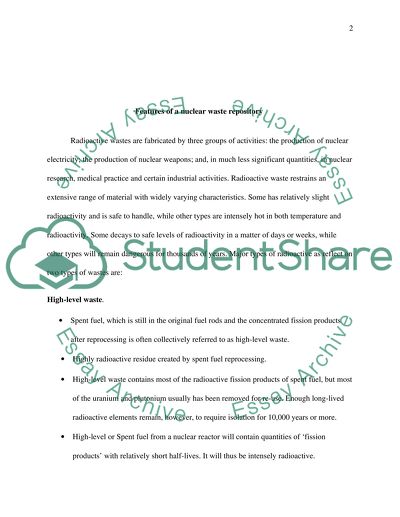Cite this document
(Radioactive Waste Disposal Assignment Example | Topics and Well Written Essays - 1500 words, n.d.)
Radioactive Waste Disposal Assignment Example | Topics and Well Written Essays - 1500 words. Retrieved from https://studentshare.org/environmental-studies/1517052-radioactive-waste-disposal-essay
Radioactive Waste Disposal Assignment Example | Topics and Well Written Essays - 1500 words. Retrieved from https://studentshare.org/environmental-studies/1517052-radioactive-waste-disposal-essay
(Radioactive Waste Disposal Assignment Example | Topics and Well Written Essays - 1500 Words)
Radioactive Waste Disposal Assignment Example | Topics and Well Written Essays - 1500 Words. https://studentshare.org/environmental-studies/1517052-radioactive-waste-disposal-essay.
Radioactive Waste Disposal Assignment Example | Topics and Well Written Essays - 1500 Words. https://studentshare.org/environmental-studies/1517052-radioactive-waste-disposal-essay.
“Radioactive Waste Disposal Assignment Example | Topics and Well Written Essays - 1500 Words”, n.d. https://studentshare.org/environmental-studies/1517052-radioactive-waste-disposal-essay.


